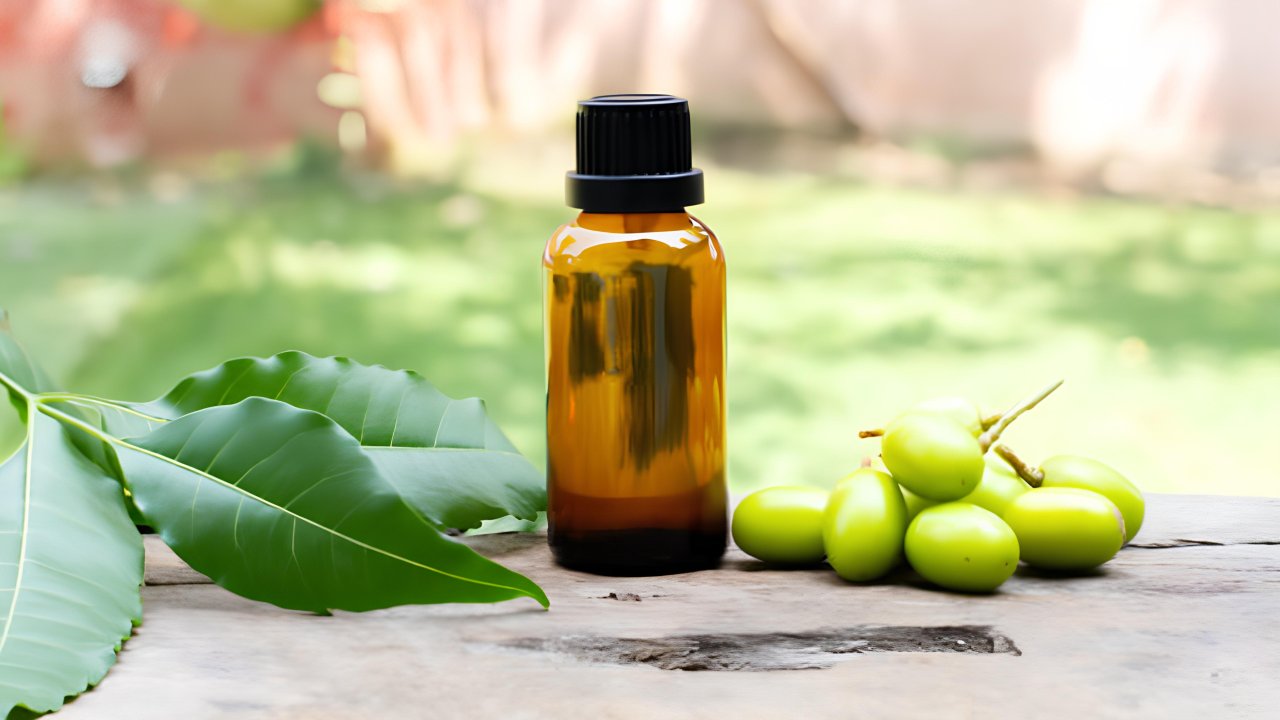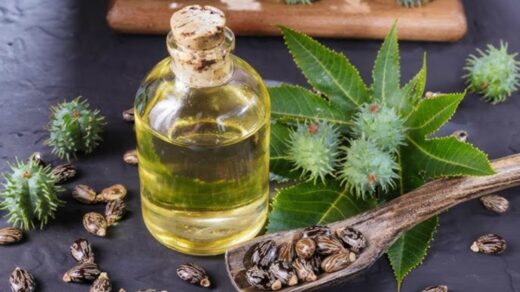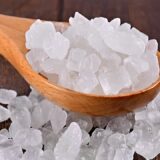Top 10 Medicinal Uses of Neem for Everyday Health Benefits
The neem tree has been used as medicine throughout the world due to its vast properties. In India, neem is known by many names such as margosa, Indian lilac, and Nimtree. In scientific terms, it is known as Azadirachta indica. Revered in traditional Ayurvedic medicine, neem is often referred to as sarvaroganivarani, meaning “reliever of sickness.”
The neem tree is believed to be a ‘village dispensary’ due to its multiple health benefits, offering remedies for a wide range of ailments. Its leaves are used in treatments for fevers, skin conditions, and infections, while the bark has been traditionally utilized for its anti-inflammatory and antiseptic properties.
Neem oil, extracted from the seeds, is renowned for its efficacy in promoting healthy skin and hair, as well as its role in natural pest control. Beyond its medicinal uses, the neem tree also plays a significant role in sustainable agriculture, as it helps improve soil health and acts as a natural pesticide, reducing the need for synthetic chemicals.
Ayurvedic Properties of Neem
- Rasa (Taste): Bitter: Neem is primarily bitter, which is considered cleansing and detoxifying in Ayurveda.
- Virya (Potency): Ushna (Heating): Neem is classified as heating, which helps combat cold conditions in the body.
- Vipaka (Post-digestive effect): Katu (Pungent): After digestion, neem has a pungent effect, aiding in digestion and metabolism.
Dosha Effects:
- Pitta: Neem is particularly beneficial for balancing excess Pitta, helping to reduce inflammation and heat-related conditions.
- Kapha: Neem can also help balance Kapha dosha by alleviating excess mucus and promoting digestion.
- Vata: Neem may aggravate Vata due to its heating nature; caution is advised for those with Vata imbalances.
Appearance of a Neem Tree
1. Height: The neem tree (Azadirachta indica) is a tall, fast-growing tree that can reach heights of 15 to 20 meters (approximately 50 to 65 feet).
2. Trunk: It features a straight, sturdy trunk with a diameter that can reach up to 1.2 meters (about 4 feet). The bark is usually grayish-brown and may be rough or scaly in texture.
3. Leaves: The leaves are pinnate, meaning they are composed of several leaflets arranged along a central stem. Young leaves are reddish to dark purple and turn dark green as they mature. Each leaf typically has 5 to 15 leaflets, giving the tree a feathery appearance.
4. Flowers: Neem trees produce small, fragrant white flowers that grow in clusters called panicles. The flowers are about 1-2 cm in diameter and have a sweet scent, attracting various pollinators like bees.
5. Fruits: The fruits are oval-shaped drupes that are about 1-2 inches long. They start off green and turn yellow or brown when ripe. Each fruit contains a single seed and has a bitter taste.
6. Roots: Neem trees have a strong and extensive root system that helps them adapt to various soil types and withstand drought conditions. The roots can grow deep, allowing the tree to access water sources.
7. Overall Shape: The neem tree has a broad, spreading canopy, providing ample shade. Its dense foliage creates a lush, green appearance, making it a popular choice for planting in gardens and along streets.
8. Growing Conditions: Neem trees thrive in tropical and subtropical climates, preferring well-drained soil and full sunlight. They are highly drought-resistant and can tolerate poor soil conditions.
9. Longevity: Neem trees can live for several decades, often exceeding 100 years in age, which contributes to their prominence in many landscapes.
These characteristics make the neem tree not only an important medicinal plant but also a visually striking presence in many environments. If you have more specific aspects you’d like to know about, feel free to ask!
10 Facts About the Neem Tree
1. Longevity: Neem trees can live for up to 200 years if well-watered, showcasing their resilience and adaptability in various environments.
2. Natural Pesticide: Neem oil is widely recognized as an effective natural pesticide and insect repellent, making it a valuable resource for organic farming and gardening.
3. Oral Care: In rural India, neem twigs are commonly used as natural toothbrushes. These twigs possess antimicrobial properties that promote oral hygiene.
4. Low Maintenance: Neem trees are easy to grow and require minimal watering. They thrive in sunny conditions, making them suitable for arid regions.
5. Skin Health: Neem trees are known for their wide-ranging benefits for skin-related issues. They can help treat acne, nourish the skin, combat fungal infections, and promote wound healing.
6. Versatile Uses: Almost all parts of the neem tree are utilized for human purposes. Leaves are used for skincare, twigs for dental care, and bark for various powdered forms.
7. Cultural Significance: In Hindu mythology, neem symbolizes purity, protection, and prosperity. Its presence is often associated with blessings and well-being.
8. Drought Resilience: Remarkably, neem trees can survive for 7-8 months in dry conditions, making them highly resilient in challenging climates.
9. Sanskrit Meaning: The word “neem” is derived from the Sanskrit word “Arita,” which means complete and perfect, reflecting the tree’s comprehensive benefits.
10. Eco-Friendly Extraction: The extraction process from neem leaves yields biodegradable, cost-effective, and eco-friendly solutions that are safe for both humans and the environment.
Parts of the Neem Plant Used
Every part of the neem tree—bark, leaves, fruits, flowers, and roots—has beneficial applications and is valued in traditional medicine.
1. Neem Bark: Fresh neem bark is characterized by its bitter, astringent, pungent, and cooling properties. It is effective for treating oral dental issues, coughs, fevers, loss of appetite, fatigue, and intestinal parasites.
Additionally, it aids in wound healing and is used to induce vomiting, address skin diseases, and relieve excessive thirst. Its antimicrobial properties further enhance its effectiveness in combating infections, making it a staple in Ayurvedic remedies.
2. Neem Leaves: According to Ayurvedic texts, neem leaves are valuable for managing neuromuscular pain (Vatik disorders). They help eliminate toxins from the body, purify the blood, and neutralize damage from free radicals. Neem leaves are also utilized for treating snake bites and insect bites.
Their anti-inflammatory and antioxidant properties contribute to overall health, making them a popular choice for detoxification and enhancing immune function. Regular use of neem leaves can support skin health and promote a clearer complexion.
3. Neem Fruits: Neem fruits are known for their bitter and purgative qualities and are used to treat hemorrhoids. They contain compounds that promote digestive health and can help alleviate constipation.
The fruits are also recognized for their potential in regulating blood sugar levels, making them beneficial for those managing diabetes. Furthermore, their antioxidant properties can aid in reducing oxidative stress in the body.
4. Neem Flowers: The flowers possess astringent and expectorant properties and are used to help regulate body heat. They are often utilized in traditional remedies for respiratory issues, as they can help clear mucus and ease coughing.
In addition, neem flowers are known for their mild sedative effects, promoting relaxation and aiding in sleep. Their rich nutrient profile also contributes to overall wellness, supporting various bodily functions.
5. Neem Oil: Extracted from the seeds, neem oil has a bitter taste and is renowned for its medicinal benefits. It is widely used in skincare for its antibacterial and antifungal properties, making it effective against acne and other skin conditions.
Additionally, neem oil is a natural insect repellent, helping to protect plants and gardens. Its anti-inflammatory effects can also soothe irritated skin and reduce redness, making it a versatile ingredient in holistic health practices
Diseases Cured by Neem Leaves
1. Skin Conditions:
Acne: Neem leaves are rich in antibacterial and anti-inflammatory properties that help reduce acne by fighting bacteria and soothing irritation. Their ability to unclog pores and control excess oil production makes them particularly effective for achieving clearer skin.
2. Infections:
Fungal Infections: Neem leaves have potent antifungal properties that combat various fungal infections, such as athlete’s foot and ringworm. They inhibit fungal growth, reduce itching and irritation, and promote skin healing, making them a natural remedy for these common ailments.
3. Respiratory Issues:
Cough: The soothing effects of neem leaves can alleviate cough symptoms by acting as an expectorant. They help clear mucus from the airways and reduce irritation, making breathing easier, particularly in cases of allergies or respiratory infections.
4. Digestive Disorders:
Dyspepsia: Neem leaves stimulate digestive enzymes, enhancing digestion and alleviating discomfort associated with dyspepsia. Their ability to promote gut health helps prevent issues like bloating and gas, contributing to overall digestive wellness and comfort.
5. Fever and Inflammatory Conditions:
Intermittent Fever: Neem leaves are traditionally used to reduce fever, especially in cases of malaria. Their antipyretic properties help lower body temperature while also addressing underlying infections, providing holistic support during illness and promoting recovery.
6. Blood Disorders:
Blood Purification: Neem leaves act as a natural detoxifier, helping cleanse the blood of impurities and toxins. This purification process supports liver function and overall health, promoting better circulation and reducing the risk of various blood-related conditions.
7. Metabolic Disorders:
Diabetes: Neem leaves are beneficial for managing diabetes due to their hypoglycemic effects. They help regulate blood sugar levels, improve insulin sensitivity, and reduce complications associated with diabetes, making them a valuable addition to dietary management strategies.
8. Heat-Related Illnesses:
Measles and Smallpox: Traditionally, neem leaves have been used to manage the symptoms of heat-related illnesses such as measles and smallpox. Their cooling properties help soothe fever, reduce rash inflammation, and promote faster recovery from these viral infections.
9. Dental Health:
Gum Disease: Neem leaves are known for their oral health benefits, helping prevent gum disease and cavities. Their antibacterial properties combat plaque buildup, while the anti-inflammatory effects help soothe gum irritation, promoting overall dental hygiene and health.
10. Hemorrhoids:
Hemorrhoids: Neem leaves help alleviate the discomfort associated with hemorrhoids by promoting bowel regularity and reducing inflammation. Their soothing properties can ease bleeding and itching, providing relief and enhancing recovery from this common condition
Traditional Use Of Neem
1. New Year Custom: In Hindu culture, it is customary to consume neem leaves on the first day of the year. This practice symbolizes a commitment to health and well-being for the year ahead.
2. Ugadi Pachhadi: In the regions of Andhra Pradesh and Karnataka, neem leaves are a key ingredient in Ugadi Pachhadi, a traditional dish prepared during the festival of Ugadi. This dish combines neem flowers with jaggery (unrefined brown sugar), tamarind, and other ingredients.
3. Symbolic Meaning: Ugadi Pachhadi represents the duality of life—sweet and bitter experiences. Sharing this dish with family and friends signifies hope for balance in the coming year and strengthens community ties.
4. Medicinal Uses: Neem leaves are historically utilized to treat a variety of heat-related illnesses such as measles, smallpox, chickenpox, and prickly heat. Their therapeutic properties are widely recognized in traditional medicine.
5. Antiseptic Properties: The antiseptic, antibacterial, and antifungal properties of neem leaves make them effective for treating skin infections, wounds, and other ailments, promoting overall health.
6. Worship Rituals: In many Hindu rituals, neem leaves are used alongside turmeric powder to purify and honor deities. This combination is believed to cleanse negative energies and invite blessings.
7. Festivals and Celebrations: During festivals, neem branches are often used in decorations and rituals, signifying prosperity, health, and protection from diseases.
8. Home Remedies: Traditional remedies often include neem for its ability to reduce fever, alleviate rashes, and treat various skin conditions. Boiled neem water is sometimes used for bathing to soothe skin irritations.
9. Cultural Significance: Neem trees are often planted near homes and temples as symbols of health and longevity. Their presence is thought to ward off negative influences and promote a harmonious environment.
10. Natural Pesticide: Beyond its medicinal uses, neem leaves are also used in agriculture as a natural pesticide, showcasing its importance in sustainable farming practices.
Top 10 Medicinal Uses of Neem
Today neem plant (Azadirachta indica) has fascinated millions of people worldwide due to its wide range of medicinal properties. Neem has been extensively used in Ayurveda, Unani, and Homoeopathic medicine since ancient times.
Neem produces a vast variety of biologically active compounds that are chemically varied; it has more than 140 compounds, which have been formed in different parts of the neem. Below are some of the medicinal uses of the neem plants in points with their properties.
1. Antibacterial:
Neem effectively fights bacterial infections, making it useful for treating skin issues such as acne, boils, and wounds. Its powerful antibacterial properties not only help reduce bacteria on the skin but also promote overall wound healing, preventing infection and accelerating recovery.
2. Antifungal:
Neem combats various fungal infections, including athlete’s foot and ringworm. Its potent antifungal compounds inhibit fungal growth, helping to alleviate itching, redness, and discomfort while promoting skin health and healing.
3. Antiviral:
Neem demonstrates antiviral properties that may protect against viruses such as herpes and hepatitis. This makes it a valuable natural remedy in traditional medicine, as it may help reduce the severity and duration of viral infections.
4. Blood Purification:
Neem is known for its detoxifying effects, helping to cleanse the blood of impurities. By enhancing circulation and promoting better organ function, neem supports overall health and well-being, contributing to a healthier immune system.
5. Anti-inflammatory:
The anti-inflammatory effects of neem provide relief for conditions like arthritis and inflammatory skin disorders. Its natural compounds target inflammation, reducing pain and swelling while promoting healing and comfort.
6. Digestive Health:
Neem aids digestion and treats various digestive issues, including dyspepsia, constipation, and intestinal worms. By promoting gut health, neem enhances effective nutrient absorption and supports a balanced digestive system.
7. Malaria Treatment:
Traditionally used in managing malaria, neem leaves and extracts can help reduce fever and alleviate associated symptoms. Their antipyretic properties assist in lowering body temperature, providing relief during illness.
8. Skin Health:
Neem is beneficial for various skin conditions, including eczema and psoriasis. It is often included in skincare products due to its soothing and healing properties, helping to reduce irritation and promote healthy skin.
9. Dental Care:
Neem leaves are effective for promoting oral hygiene. Their natural antibacterial characteristics help prevent gum disease and cavities, making them a common choice for traditional oral care practices.
10. Blood Sugar Regulation:
Neem may help regulate blood sugar levels, improving insulin sensitivity and offering potential benefits for managing diabetes. Its ability to support metabolic health makes it a valuable addition to a diabetes management plan.
The neem tree, often referred to as the “divine tree,” is celebrated for its remarkable medicinal properties and ecological benefits. With its striking appearance and resilience, neem not only provides shade and beauty to its surroundings but also plays a crucial role in traditional medicine.
Resources:
- Therapeutics Role of Azadirachta indica (Neem) and Their Active Constituents in Diseases Prevention and Treatment(1)
- An overview of Neem (Azadirachta indica) and its potential impact on health(2)
- Neem (Azadirachta indica): A Review on Medicinal Kalpavriksha(3)
- Exploring the role of Azadirachta indica (neem) and its active compounds in the regulation of biological pathways: an update on molecular approach(4)


























Its very useful to us.It is one of most important tree that Indians have trusted for years to prepare different medicines which can be used as the treatment for more than 100 diseases.
In today’s article, you have well explore us a few uses of Azadirachta Indica and how it may help you.